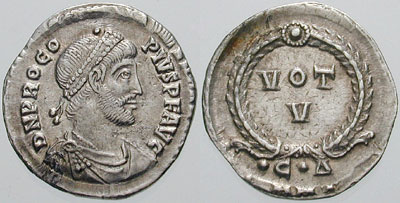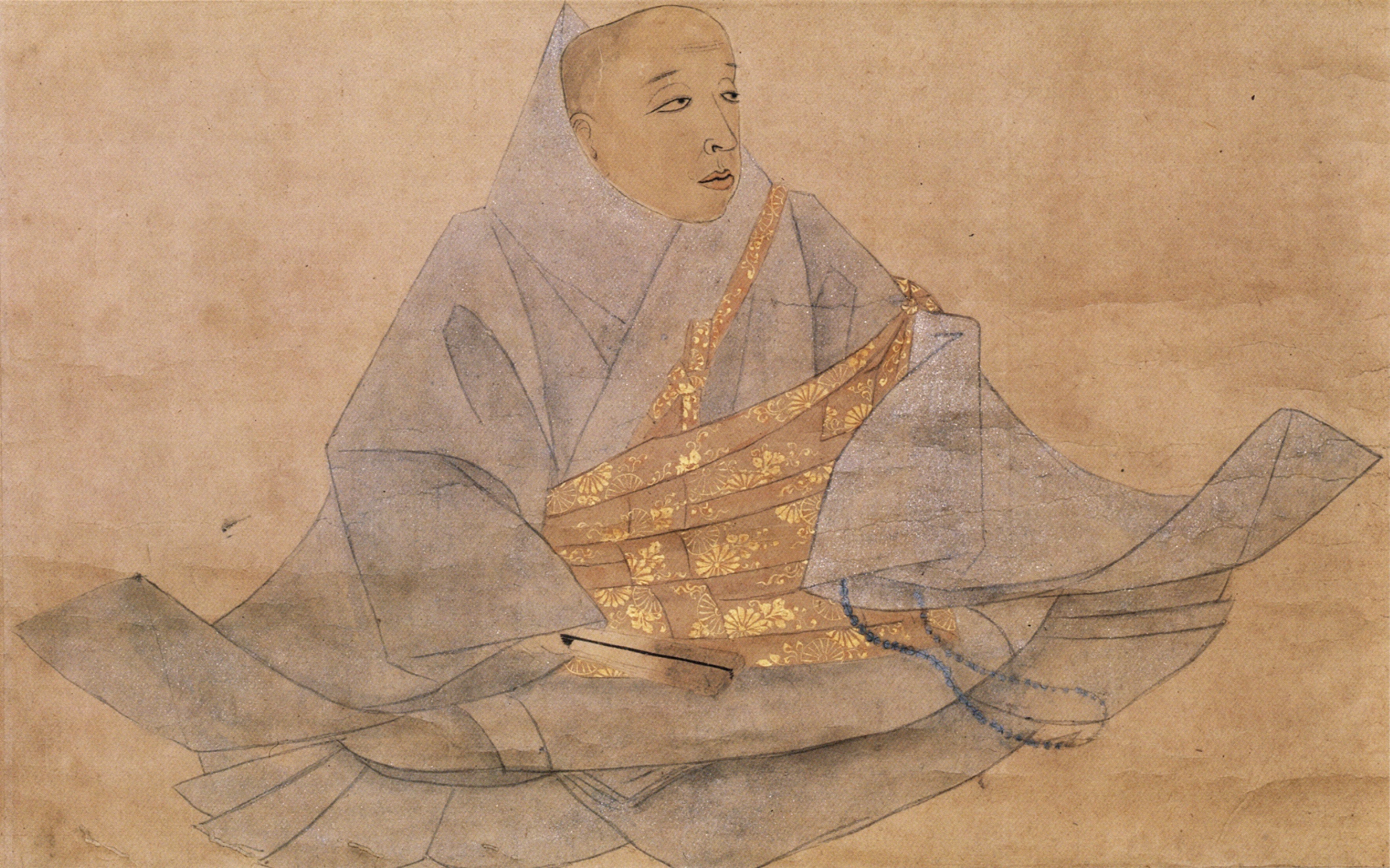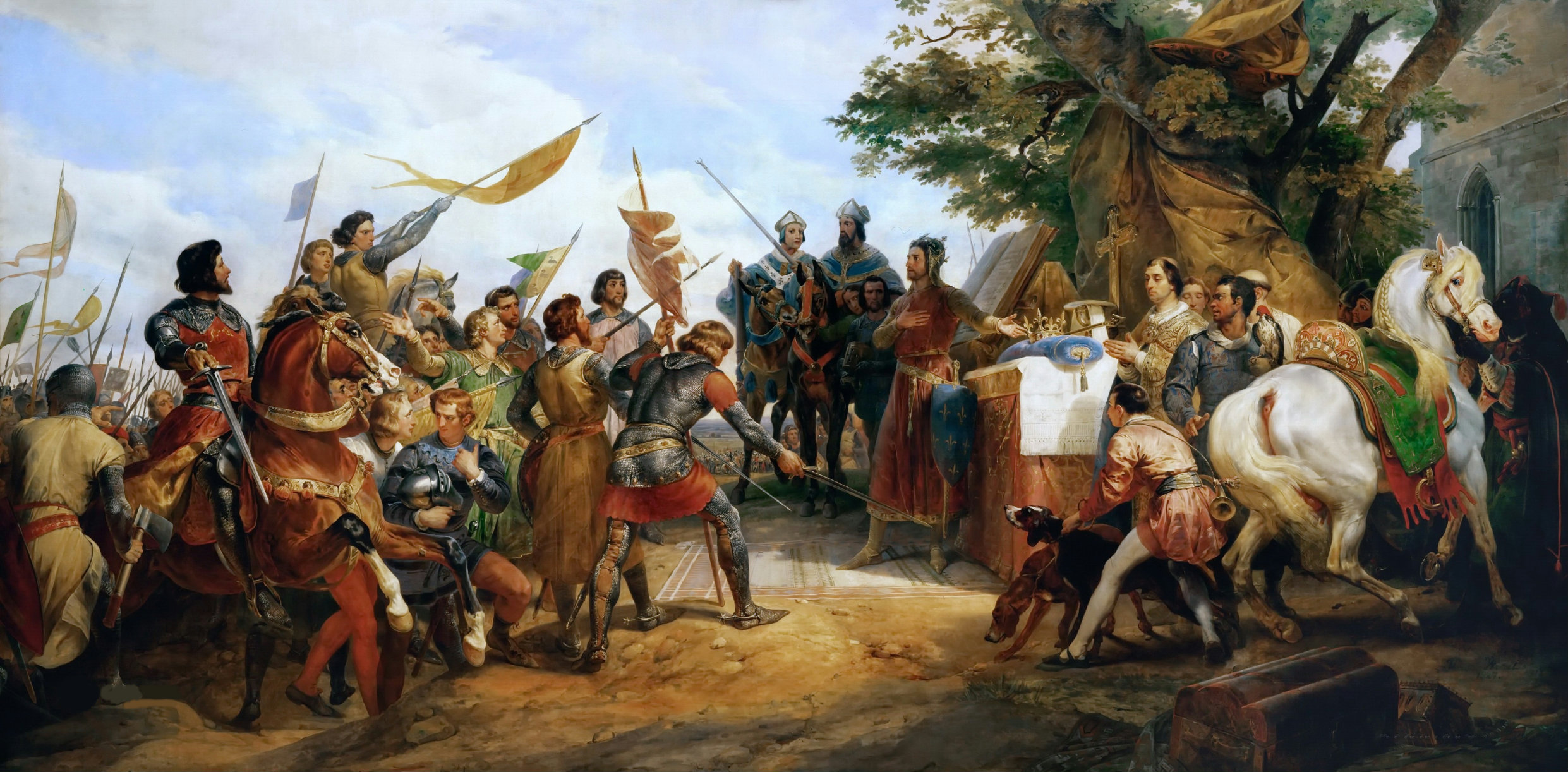|
November 1
Events Pre-1600 * 365 – The Alemanni cross the Rhine and invade Gaul. Emperor Valentinian I moves to Paris to command the army and defend the Gallic cities. * 996 – Emperor Otto III issues a deed to Gottschalk, Bishop of Freising, which is the oldest known document using the name ''Ostarrîchi'' (Austria in Old High German). *1009 – Berber forces led by Sulayman ibn al-Hakam defeat the Umayyad caliph Muhammad II of Córdoba in the battle of Alcolea. * 1141 – Empress Matilda's reign as 'Lady of the English' ends with Stephen of Blois regaining the title of 'King of England'. * 1179 – Philip II is crowned as 'King of France'. *1214 – The port city of Sinope surrenders to the Seljuq Turks. * 1348 – The anti-royalist Union of Valencia attacks the Jews of Murviedro on the pretext that they are serfs of the King of Valencia and thus "royalists". * 1503 – Pope Julius II is elected. * 1512 – The ceiling of the Sistine Chape ... [...More Info...] [...Related Items...] OR: [Wikipedia] [Google] [Baidu] |
AD 365
__NOTOC__ Year 365 ( CCCLXV) was a common year starting on Saturday (link will display the full calendar) of the Julian calendar. At the time, it was known in the West as the Year of the Consulship of Augustus and Valens (or, less frequently, year 1118 ''Ab urbe condita''). The denomination 365 for this year has been used since the early medieval period, when the Anno Domini calendar era became the prevalent method in Europe for naming years. Events By place Roman Empire * July 21 – An earthquake and tsunami devastates Crete and Alexandria and affects Italy, Greece, and Palestine. * September 28 – Procopius revolts and bribes two legions passing by Constantinople. He proclaims himself Emperor, and takes control of Thrace and Bithynia. * November 1 – The Alamanni cross the Rhine and invade Gaul. Emperor Valentinian I moves to Paris to command the army and defend the Gallic cities. China * March 30 – Sixteen Kingdoms: Jin Feidi, age 23, succe ... [...More Info...] [...Related Items...] OR: [Wikipedia] [Google] [Baidu] |
Empress Matilda
Empress Matilda ( 7 February 110210 September 1167), also known as the Empress Maude, was one of the claimants to the English throne during the civil war known as the Anarchy. The daughter of King Henry I of England, she moved to Germany as a child when she married the future Holy Roman Emperor Henry V. She travelled with her husband to Italy in 1116, was controversially crowned in St Peter's Basilica, and acted as the imperial regent in Italy. Matilda and Henry V had no children, and when he died in 1125, the imperial crown was claimed by his rival Lothair of Supplinburg. Matilda's younger and only full brother, William Adelin, died in the ''White Ship'' disaster of 1120, leaving Matilda's father and realm facing a potential succession crisis. On Emperor Henry V's death, Matilda was recalled to Normandy by her father, who arranged for her to marry Geoffrey of Anjou to form an alliance to protect his southern borders. Henry I had no further legitimate children and nominated ... [...More Info...] [...Related Items...] OR: [Wikipedia] [Google] [Baidu] |
Murviedro
Sagunto ( ca-valencia, Sagunt) is a municipality of Spain, located in the province of Valencia, Valencian Community. It belongs to the modern fertile ''comarca'' of Camp de Morvedre. It is located c. 30 km north of the city of Valencia, close to the Costa del Azahar on the Mediterranean Sea. It is best known for the remains of the ancient Iberian and Roman city of ''Saguntum''. The siege of Saguntum in 219 BC was the trigger of the Second Punic War between the Carthaginians and the Romans. The municipality includes three differentiated urban nuclei: Ciutat Vella (Sagunto), and . Over half of the population lives in the coastal settlement of Puerto de Sagunto. History Gaspar Juan Escolano, in his ''Decades of the History of Valencia'' (1610-11), writes that the first settlers of Sagunto were Armenian families, the Sagas, who came to the peninsula with Tubal and laid the first foundations of the city naming it Sagunt (Armenian: of Saga). There is also a speculation that ... [...More Info...] [...Related Items...] OR: [Wikipedia] [Google] [Baidu] |
Union Of Valencia
The Union of Valencia ( es, Unión de Valencia) was an anti-royalist movement in the Kingdom of Valencia begun in 1283 and lasting into the fifteenth century. The Union was formed in the aftermath of the formation of the Union of Aragon in October 1283. Its essential purpose was as a tool of the Valencian nobility to be used against the influence of Catalans and foreigners on the actions of the Crown. By 1285 the Unions had severely curtailed the powers of the king and were hindering his efforts in the War of the Sicilian Vespers and against the Aragonese Crusade that invaded Catalonia that year. In 1347 during the ''cortes'' of Zaragoza, the Union of Valencia allied with that of Aragon and demanded the right to appoint a ''Justícia'' in Valencia like the Aragonese ''Unidos'' had. They then successfully besieged the royalist castle of Xàtiva. The Union persuaded Ferdinand, Prince of Aragon to be their lieutenant-general and, with an army of 30,000, he dealt the royalists a secon ... [...More Info...] [...Related Items...] OR: [Wikipedia] [Google] [Baidu] |
1348
Year 1348 ( MCCCXLVIII) was a leap year starting on Tuesday (link will display the full calendar) of the Julian calendar, the 1348th year of the Common Era (CE) and ''Anno Domini'' (AD) designations, the 348th year of the 2nd millennium, the 48th year of the 14th century, and the 9th and pre-final year of the 1340s decade. Events January–December * January – Gonville Hall, the forerunner of Gonville and Caius College, Cambridge, England, is founded. * January 25 – The 6.9-magnitude 1348 Friuli earthquake centered in Northern Italy was felt across Europe. Contemporary minds linked the quake with the Black Death, fueling fears that the Biblical Apocalypse had arrived. * February 2 – Battle of Strėva: the Teutonic Order secure a victory over the Grand Duchy of Lithuania. * April 7 – Charles University in Prague, founded the previous year by papal bull, is granted privileges by Charles I, King of Bohemia, in a golden bull. * April 23 – Edw ... [...More Info...] [...Related Items...] OR: [Wikipedia] [Google] [Baidu] |
Seljuq Turks
The Seljuk dynasty, or Seljukids ( ; fa, سلجوقیان ''Saljuqian'', alternatively spelled as Seljuqs or Saljuqs), also known as Seljuk Turks, Seljuk Turkomans "The defeat in August 1071 of the Byzantine emperor Romanos Diogenes by the Turkomans at the battle of Malazgirt (Manzikert) is taken as a turning point in the history of Anatolia and the Byzantine Empire. or the Saljuqids, was an Oghuz Turks, Oghuz Turkic, Sunni Muslim dynasty that gradually became Persianate society, Persianate and contributed to the Turco-Persian tradition in the medieval West Asia, Middle East and Central Asia. The Seljuks established the Seljuk Empire (1037-1194), the Kerman Seljuk Sultanate, Sultanate of Kermân (1041-1186) and the Sultanate of Rum (1074-1308), which at their heights stretched from Iran to Anatolia, and were the prime targets of the First Crusade. Early history The Seljuks originated from the Kınık (tribe), Kinik branch of the Oghuz Turks, who in the 8th century lived on the p ... [...More Info...] [...Related Items...] OR: [Wikipedia] [Google] [Baidu] |
Siege Of Sinope
The siege of Sinope in 1214 was a successful siege and capture of Sinope by the Sultanate of Rum under their Sultan, Kaykaus I (r. 1211–1220). Sinope was an important port city on the Black Sea coast of modern Turkey, at the time held by the Empire of Trebizond, one of the Byzantine Greek successor states formed after the Fourth Crusade. The siege is described in some detail by the near-contemporary Seljuq chronicler Ibn Bibi. The Trapezuntine emperor Alexios I (r. 1204–1222) led an army to break the siege, but he was defeated and captured, and the city surrendered on 1 November.Savvides (2009), pp. 55–56Treadgold (1997), p. 718 Overview According to Ibn Bibi's account, Kaykaus I decided to embark on the conquest after receiving reports from the frontier that Alexios' troops had been violating Seljuq territory. Upon this, he and his beys gathered those who had been to Sinope and drew up a plan for the conquest, deciding that a long siege would be required. However, a gro ... [...More Info...] [...Related Items...] OR: [Wikipedia] [Google] [Baidu] |
Sinop, Turkey
Sinop, historically known as Sinope (; gr, Σινώπη, Sinōpē), is a city on the isthmus of İnce Burun (İnceburun, Cape Ince), near Cape Sinope (Sinop Burnu, Boztepe Cape, Boztepe Burnu) which is situated on the northernmost edge of the Turkish side of the Black Sea coast, in the ancient region of Paphlagonia, in modern-day northern Turkey. The city serves as the capital of Sinop Province. History Over a period of approximately 2,500 years, Sinope has at various times been settled by Colchians, Greeks (in the late 7th, late 5th, and 4th–3rd centuries BC), by Romans in the mid-1st century BC, and by Turkic people beginning in the 12th century. In the 19th and 20th centuries it was also settled by the '' muhacir'' who immigrated from the Balkans and Caucasus. Evidence for Hittite Kingdom settlement along the Black Sea's southern shore remains murky. Researchers in the 1940s and 50s debated whether the "Great Sea", mentioned on the Boghazkoy tablets describing war b ... [...More Info...] [...Related Items...] OR: [Wikipedia] [Google] [Baidu] |
1214
Year 1214 ( MCCXIV) was a common year starting on Wednesday (link will display the full calendar) of the Julian calendar, the 1214th year of the Common Era (CE) and ''Anno Domini'' (AD) designations, the 214th year of the 2nd millennium, the 14th year of the 13th century, and the 5th year of the 1210s decade. Events By place Byzantine Empire * November 1 – Siege of Sinope: The Seljuk Turks under Sultan Kaykaus I capture the strategic Black Sea port city of Sinope – at the time held by the Empire of Trebizond (one of the Byzantine successor states formed after the Fourth Crusade). Emperor Alexios I of Trebizond leads an army to break the siege, but he is defeated and captured. His capture forces the Byzantines to accept tributary status to Kaykaus. Europe * February 15 – King John (Lackland) lands with an invasion force (accompanied by mercenaries) at La Rochelle; many barons of England refuse to join him in the campaign. John sends his half-b ... [...More Info...] [...Related Items...] OR: [Wikipedia] [Google] [Baidu] |
France In The Middle Ages
The Kingdom of France in the Middle Ages (roughly, from the 10th century to the middle of the 15th century) was marked by the fragmentation of the Carolingian Empire and West Francia (843–987); the expansion of royal control by the House of Capet (987–1328), including their struggles with the virtually independent principalities (duchies and counties, such as the Normandy#Norman expansion, Norman and County of Anjou, Angevin regions) that had developed following the Viking invasions and through the piecemeal dismantling of the Carolingian Empire and the creation and extension of administrative/state control (notably under Philip II of France, Philip II Augustus and Louis IX of France, Louis IX) in the 13th century; and the rise of the House of Valois (1328–1589), including the protracted dynastic crisis against the House of Plantagenet and their Angevin Empire, dominated by the Kingdom of England, cumulating in the Hundred Years' War (1337–1453), compounded by the catastr ... [...More Info...] [...Related Items...] OR: [Wikipedia] [Google] [Baidu] |
Coronation
A coronation is the act of placement or bestowal of a coronation crown, crown upon a monarch's head. The term also generally refers not only to the physical crowning but to the whole ceremony wherein the act of crowning occurs, along with the presentation of other items of regalia, marking the formal investiture of a monarch with regal power. Aside from the crowning, a coronation ceremony may comprise many other rituals such as the taking of special vows by the monarch, the investing and presentation of regalia to the monarch, and acts of homage by the new ruler's subjects and the performance of other ritual deeds of special significance to the particular nation. Western-style coronations have often included anointing the monarch with holy anointing oil, holy oil, or chrism as it is often called; the anointing ritual's religious significance follows examples found in the Bible. The monarch's consort may also be crowned, either simultaneously with the monarch or as a separate eve ... [...More Info...] [...Related Items...] OR: [Wikipedia] [Google] [Baidu] |
Philip II Of France
Philip II (21 August 1165 – 14 July 1223), byname Philip Augustus (french: Philippe Auguste), was King of France from 1180 to 1223. His predecessors had been known as kings of the Franks, but from 1190 onward, Philip became the first French monarch to style himself "King of France" (Latin: ''rex Francie''). The son of King Louis VII and his third wife, Adela of Champagne, he was originally nicknamed ''Dieudonné'' (God-given) because he was a first son and born late in his father's life. Philip was given the epithet "Augustus" by the chronicler Rigord for having extended the crown lands of France so remarkably. After decades of conflicts with the House of Plantagenet, Philip succeeded in putting an end to the Angevin Empire by defeating a coalition of his rivals at the Battle of Bouvines in 1214. This victory would have a lasting impact on western European politics: the authority of the French king became unchallenged, while the English King John was forced by his barons to ... [...More Info...] [...Related Items...] OR: [Wikipedia] [Google] [Baidu] |







